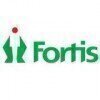Senior Pharmacist
70+ Senior Pharmacist Interview Questions and Answers

Asked in Netmeds.com

Q. Schedule G, H, H1 . hypertension disease . types of diabetics. Anti diabetics medicine name with compositions. How to increase sale . How to handle patients. What is necessary for the patients to give Schedule...
read moreThe interview questions cover topics such as drug schedules, hypertension, types of diabetes, anti-diabetic medications, sales strategies, patient handling, and Schedule H1 medication requirements.
Drug schedules G, H, and H1 are used to regulate the sale and distribution of medications in India.
Hypertension is a common condition that requires careful management with medications such as ACE inhibitors, beta-blockers, and diuretics.
There are two main types of diabetes: type 1, ...read more

Asked in Fortis Healthcare

Q. What is the procedure for dispensing narcotic vials and tablets?
Dispensing narcotic vials and tablets requires strict adherence to legal and ethical guidelines.
Verify the prescription and patient information
Ensure proper storage and handling of the medication
Document dispensing information accurately
Educate patients on proper use and potential side effects
Maintain inventory control and security measures
Comply with state and federal regulations
Monitor for potential abuse or diversion
Collaborate with healthcare providers as needed
Senior Pharmacist Interview Questions and Answers for Freshers

Asked in The Hans Foundation

Q. What is hypertension, and what are some commonly prescribed medications for it?
Hypertension is a chronic condition characterized by elevated blood pressure, increasing the risk of heart disease and stroke.
Definition: Hypertension, or high blood pressure, occurs when the force of blood against artery walls is consistently too high.
Causes: It can be caused by factors such as genetics, poor diet, lack of exercise, obesity, and stress.
Symptoms: Often called the 'silent killer,' hypertension may not show symptoms until serious complications arise.
Medications...read more

Asked in Tata 1mg

Q. What is the difference between generic and ethical medicine?
Generic medicines are identical to brand-name medicines in dosage, safety, strength, quality, performance, and intended use, while ethical medicines are patented and sold under a brand name.
Generic medicines are bioequivalent to brand-name medicines, meaning they have the same active ingredients and are absorbed in the same way in the body.
Ethical medicines are patented and sold under a brand name, making them more expensive than generic medicines.
Generic medicines are typica...read more

Asked in Navayuga Engineering Company

Q. schedule H drugs that shall be sold by retailer on of the RMP, Eg - Amikacin sulphate, Antibitics, etc
Schedule H drugs can only be sold by retailers on the prescription of a registered medical practitioner.
Schedule H drugs are drugs that have a higher potential for abuse and addiction.
These drugs can only be sold by retailers on the prescription of a registered medical practitioner.
Examples of Schedule H drugs include Amikacin sulphate, Antibiotics, etc.

Asked in Saifee Hospital

Q. What is a commonly used painkiller or NSAID?
Ibuprofen is a famous painkiller and NSAID.
Ibuprofen is a nonsteroidal anti-inflammatory drug (NSAID) commonly used to relieve pain, reduce inflammation, and lower fever.
It is available over-the-counter and by prescription in various forms such as tablets, capsules, and liquid.
Ibuprofen is effective in treating conditions like headaches, menstrual cramps, muscle aches, arthritis, and dental pain.
Other examples of NSAIDs include aspirin, naproxen, and diclofenac.
Senior Pharmacist Jobs




Asked in Central Reserve Police Force

Q. What data is required to be entered upon the receipt of a drug?
Essential data for drug receipt includes identification, quantity, and storage conditions.
Drug name and strength (e.g., Amoxicillin 500mg)
Quantity received (e.g., 100 tablets)
Lot number for traceability (e.g., LOT123456)
Expiration date (e.g., 12/2025)
Supplier information (e.g., ABC Pharmaceuticals)
Storage conditions (e.g., store at room temperature)
Date of receipt (e.g., 01/10/2023)
Asked in E-24 Hospital

Q. What is the procedure to give antibiotics? How to take good care of patients ?
The procedure to give antibiotics involves assessing the patient, selecting the appropriate antibiotic, determining the dosage and frequency, and monitoring the patient's response.
Assess the patient's condition and determine if antibiotics are necessary
Select the appropriate antibiotic based on the type of infection and the patient's medical history
Determine the dosage and frequency of administration
Educate the patient on how to take the antibiotics correctly
Monitor the patie...read more
Share interview questions and help millions of jobseekers 🌟

Asked in Janarogyam Generic

Q. What is schedule X? Name Antacids, antibiotics Why anti -TB drug given with combination? Storage temperature of insulin
Schedule X is a category of drugs in India that require a prescription and cannot be sold over the counter.
Schedule X drugs are considered to have a high potential for abuse and addiction
Examples of Schedule X drugs include opioids, sedatives, and stimulants
Antacids and antibiotics are not Schedule X drugs and can be sold over the counter
Anti-TB drugs are often given in combination to prevent the development of drug-resistant strains of TB
Insulin should be stored in a cool pl...read more

Asked in Saifee Hospital

Q. The interview will assess your confidence through your body language.
Confident body language conveys professionalism and assurance, essential for a Senior Pharmacist role.
Maintain eye contact to show engagement and confidence.
Use open gestures, like uncrossed arms, to appear approachable.
Stand or sit up straight to project authority and self-assurance.
Nod occasionally to indicate understanding and encourage dialogue.
Smile genuinely to create a positive atmosphere.

Asked in Central Reserve Police Force

Q. What are the drugs known as proton pump inhibitors (PPIs)?
Proton pump inhibitors (PPIs) are medications that reduce stomach acid production, aiding in the treatment of various gastrointestinal disorders.
PPIs work by blocking the proton pump in the stomach lining.
Common PPIs include omeprazole, esomeprazole, lansoprazole, and pantoprazole.
They are used to treat conditions like GERD, peptic ulcers, and Zollinger-Ellison syndrome.
PPIs can help heal esophagitis caused by acid reflux.
Long-term use may lead to side effects such as nutrien...read more

Asked in Netmeds.com

Q. What facilities does the company provide to employees?
Companies offer various facilities to support employee well-being and productivity, enhancing job satisfaction and retention.
Health insurance plans, including medical, dental, and vision coverage.
Flexible working hours to accommodate personal commitments.
Professional development opportunities, such as training and workshops.
Employee assistance programs (EAP) for mental health support.
On-site amenities like gyms, cafeterias, or relaxation areas.
Paid time off (PTO) policies, in...read more

Asked in Asian Heart Institute

Q. What dosages does Enoxaparin come in?
Enoxaparin is an anticoagulant available in various dosages for preventing and treating thromboembolic disorders.
Available dosages: 20 mg, 40 mg, 60 mg, and 80 mg.
Commonly used for prophylaxis of deep vein thrombosis (DVT).
Dosing may vary based on patient weight and clinical condition.
Example: 40 mg is often used for DVT prophylaxis in patients undergoing surgery.

Asked in Navayuga Engineering Company

Q. Tell me about Schedule H drugs.
Schedule H drugs are prescription medications that have a high potential for abuse and are strictly regulated.
Schedule H drugs are classified as prescription-only medications.
They have a high potential for abuse and addiction.
These drugs are subject to strict regulations and can only be dispensed by a licensed pharmacist.
Examples of Schedule H drugs include opioids like oxycodone and hydrocodone, as well as sedatives like diazepam and alprazolam.

Asked in Flipkart Health+

Q. Deep details about medicine composition and brand name?
The composition of a medicine refers to the active ingredients it contains, while the brand name is the name given to a specific version of the medicine.
Medicine composition includes active ingredients and other non-active substances.
Brand name is a unique name given to a medicine by the pharmaceutical company.
Composition and brand name are important for identifying and prescribing the correct medicine.
Examples of medicine composition: Paracetamol, Acetaminophen, and Ibuprofe...read more
Asked in Sai Surya Hospital

Q. Can two antacids be given to a patient simultaneously?
Yes, two different antacids can be given to a patient to provide relief from acid reflux or indigestion.
Different antacids can have different mechanisms of action, providing more comprehensive relief.
Combining antacids with different active ingredients can target different aspects of acid production in the stomach.
It is important to consider potential interactions between the two antacids and any other medications the patient may be taking.

Asked in KIMS Hospital

Q. What are antipyretics? Give some examples.
Antipyretics are medications used to reduce fever and lower body temperature.
Common antipyretics include acetaminophen (paracetamol).
Ibuprofen is another widely used antipyretic.
Aspirin can also be used, but is not recommended for children.
Antipyretics work by acting on the hypothalamus to regulate body temperature.

Asked in Reliance Smart Point

Q. medicine contents with brand names of diabeties, blood pressure, thyroid
Some common medicines for diabetes, blood pressure, and thyroid with their brand names.
Diabetes: Metformin (Glucophage), Sitagliptin (Januvia), Insulin (Humalog)
Blood Pressure: Amlodipine (Norvasc), Lisinopril (Prinivil), Losartan (Cozaar)
Thyroid: Levothyroxine (Synthroid), Liothyronine (Cytomel), Thyroid (Armour Thyroid)

Asked in Central Reserve Police Force

Q. What does the term "multi-pharmacy" refer to?
Multi-pharmacy refers to the practice of patients receiving medications from multiple pharmacies, often leading to potential risks.
Involves patients using more than one pharmacy for their prescriptions.
Can lead to medication errors due to lack of coordination.
Increases the risk of drug interactions and adverse effects.
Example: A patient may get pain medication from one pharmacy and blood pressure medication from another.
Requires careful monitoring by healthcare providers to e...read more

Asked in Central Reserve Police Force

Q. What is the use of the medication Tab Sorbitrate?
Tab Sorbitrate is used to manage angina pectoris and heart failure by dilating blood vessels.
Sorbitrate contains sorbitrate, a nitrate that helps relieve chest pain.
It works by relaxing and widening blood vessels, improving blood flow.
Commonly prescribed for patients with angina to prevent episodes.
Can also be used in heart failure management to reduce workload on the heart.
Dosage and administration should be tailored to individual patient needs.

Asked in Asian Heart Institute

Q. Give an example of a narcotic drug.
Fentanyl citrate is a potent synthetic opioid analgesic used for pain management.
Fentanyl citrate is commonly used in medical settings for pain relief
It is classified as a narcotic drug due to its high potential for abuse and addiction
Fentanyl citrate is available in various forms such as patches, lozenges, and injections

Asked in The Hans Foundation

Q. What are the uses of Loperamide?
Loperamide is an antidiarrheal medication used to reduce the frequency of diarrhea and improve stool consistency.
Treatment of Acute Diarrhea: Loperamide is commonly used to manage sudden episodes of diarrhea, such as those caused by infections or dietary changes.
Chronic Diarrhea Management: It can also be used in chronic conditions like Irritable Bowel Syndrome (IBS) to help control symptoms.
Travelers' Diarrhea: Loperamide is often recommended for travelers experiencing diarr...read more

Asked in MedPlus

Q. Explain how you process prescriptions.
I process prescriptions by verifying patient information, checking for drug interactions, and ensuring correct dosage and instructions.
Verify patient information such as name, date of birth, and address
Check for any drug allergies or interactions with other medications
Ensure correct dosage and instructions are provided to the patient
Consult with the prescriber if there are any concerns or questions
Document all information accurately in the patient's profile

Asked in Tata 1mg

Q. What is the best route of administration for this drug?
Drug route administration refers to the way in which a medication is introduced into the body.
It is important to consider the drug's properties and the patient's condition when selecting a route of administration
Common routes include oral (by mouth), intravenous (IV), intramuscular (IM), subcutaneous (SC), and topical (on the skin)
The chosen route can affect the drug's absorption, distribution, metabolism, and excretion
Some drugs can be administered through multiple routes de...read more

Asked in Tata 1mg

Q. What is the salt composition of Disprin?
Salt in Disprin medicine is acetylsalicylic acid, also known as aspirin.
The salt in Disprin medicine is acetylsalicylic acid, which is commonly known as aspirin.
Aspirin is a nonsteroidal anti-inflammatory drug (NSAID) used to reduce pain, inflammation, and fever.
It works by inhibiting the production of certain chemicals in the body that cause pain and inflammation.


Q. Five Name if Antidiabetic Drug swhy
Antidiabetic drugs are used to manage diabetes by controlling blood sugar levels. Here are five common ones.
Metformin - reduces glucose production in the liver
Sulfonylureas - stimulate insulin production
DPP-4 inhibitors - increase insulin production and decrease glucose production
GLP-1 receptor agonists - increase insulin production and decrease appetite
SGLT2 inhibitors - increase glucose excretion in urine

Asked in Tata 1mg

Q. What is compatibility?
Compatibility refers to the ability of two or more substances to exist together without causing harm or undesirable effects.
Compatibility in pharmacy refers to the ability of different medications to be mixed together without causing any adverse reactions or changes in effectiveness.
It is important for pharmacists to ensure compatibility when preparing IV medications or other compounded formulations.
Incompatibility can lead to precipitation, pH changes, or other physical or c...read more

Asked in Reliance Retail

Q. What are the differences between generic and branded medicine?
Generic medicines are identical to branded medicines in dosage, strength, quality, performance, and intended use, but are typically cheaper.
Generic medicines have the same active ingredients as branded medicines.
Generic medicines are usually cheaper than branded medicines.
Generic medicines may look different in terms of shape, color, or packaging compared to branded medicines.
Both generic and branded medicines undergo strict quality control measures.
Examples of generic medici...read more

Asked in Zydus Lifesciences

Q. Do you know how to operate a computer?
Yes, I am proficient in operating a computer.
I am experienced in using various software programs for pharmacy management.
I can navigate electronic health records systems efficiently.
I am skilled in conducting online research for drug information.
I am comfortable with using Microsoft Office applications for documentation and communication.
Asked in Smart Chemist

Q. What is the role of a pharmacist?
Pharmacists are healthcare professionals who specialize in the safe and effective use of medications.
Dispensing medications
Counseling patients on proper medication use
Monitoring for drug interactions and side effects
Collaborating with healthcare providers to optimize patient care
Ensuring medication safety and accuracy
Managing pharmacy operations
Providing education to patients and other healthcare professionals
Interview Questions of Similar Designations
Interview Experiences of Popular Companies






Calculate your in-hand salary
Confused about how your in-hand salary is calculated? Enter your annual salary (CTC) and get your in-hand salary


Reviews
Interviews
Salaries
Users










